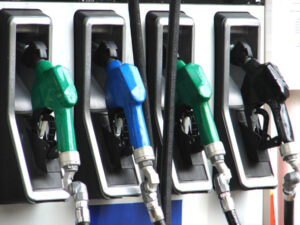What goes in Poland on 21st of April.
PGE and Ørsted signed a contract for offshore turbines
Today, PGE and Denmark’s Ørsted announced an important decision on the construction of the Baltica offshore wind farm. The two companies signed a contract for the supply of turbines for the Baltica 2 project.
The Baltic Sea will soon become Poland’s new energy hub. Along with the need to invest in renewables, Polish energy companies intend to develop offshore farms, but for this purpose it is necessary to cooperate with foreign companies.
It is worth recalling that the Baltica project includes two stages: Baltica 2 and Baltica 3. The Baltica 3 project with a capacity of up to 1045.5 MW will be the first project to be launched – according to the schedule, which will happen in 2026. IMF Baltica 2, an installation with a capacity of up to 1,498 MW, is expected to be commissioned in 2027.
„PGE is leading the energy transition. In the first phase, we will have a lot of green power based on offshore wind energy. The entire investment process is a work for years,” said Undersecretary of State Karol Rabenda from the Ministry of State Assets.
„(…) It is the largest offshore project in Europe, providing energy to 2.5 million households. By 2030, we will have more than 2 GW of energy. The scale of this investment will be huge, as it will meet 10% of Poland’s energy demand. By 2040, we will have about 7 GW. I would like to remind you that PGE has received the largest number of permits for the construction of wind farms,” said Wojciech Dąbrowski, president of the PGE management board.
„Today is a special day for the development of the Polish offshore sector. In total, we have built 30 offshore farms . We live in very challenging times because of Russia’s invasion of Ukraine and rising energy prices. This project will also accelerate the development of green energy in Poland. We are pleased to be able to support PGE on this path,” said Erasmus Erbeck, representative of Ørsted.
„We are going to install our best and most advanced turbines. Each turbine will be taller than the Palace of Culture, and there will be more than 100 of them,” pthe president of Siemens Gamesa said.
Jacek Perzyński
Europe reduced gas consumption by almost a fifth, but Poland did not meet the target
The consumption of natural gas in the European Union dropped between August 2022 and March 2023 by 17.7 percent due to the energy crisis fueled by Gazprom. Poland did not meet the EU target, although it also lowered consumption.
This reduction represents the achievement of the EU consumption reduction target of 15% over the period in question. This is part of the REPowerEU plan, which assumes the abandonment of Russian fossil fuels as soon as possible. Most EU countries completed the plan successfully, but not Poland, which reduced consumption by 12.5 percent. Ireland, Slovakia, Spain, Slovenia and Belgium failed as well. Ireland had the worst result (-0.2%). The largest decrease in consumption was recorded in Finland (55.7 percent). Lithuania reduced consumption by 40.5 percent and Sweden by 37.2 percent.
Eurostat / Wojciech Jakóbik
PIE: Naftoport can guarantee security of supply of raw materials to Central and Eastern Europe
„Poland can guarantee security of supply of fossil fuels to the region of Central and Eastern Europe,” the Polish Economic Institute wrote in a report.
The PIE wrote that the Gdańsk Naftoport transhipped a record 24.5 million tons of oil and fuels in 2022. This year it is expected to be 36 million tons. The maximum capacity of the Naftoport is approx. 40 million tons.
„The report from the LIBERO crisis exercises of 2017 showed that the Naftoport has enough capacity to meet the demand for oil in Poland, and oil supplies to Lithuania, Latvia, Estonia, the Czech Republic and partly to Germany would also not be at risk,” the report said.
„At the turn of 2022-2023, test deliveries of oil from Poland to Germany have already taken place. The German authorities announced at the end of 2022 that the import of crude through the Naftoport will cover 70 percent of the needs of the Schwedt refinery. The use of 15.5 million tons of the Naftoport capacity, assuming no restrictions on transport to the western neighbor, would account for more than 18 percent of Germany’s consumption,” PIE calculated.
Polish Press Agency / Jacek Perzyński
China to open an electrolyte factory in Lower Silesia
The Chinese company Guotai-Huarong Poland starts mass production in Prusice in Lower Silesia and wants to produce 40,000 tons of electrolyte per year. This amount could supply about 500,000 batteries per year.
GTHR Poland started building the electrolyte plant in 2020 and invested USD 66 million in it. The product will be used to power lithium-ion batteries. It takes about 80 kg of electrolyte to power one car, and thus the factory in Prusice will be able to power half a million cars a year.
The Polish Alternative Fuels Association estimates that lithium-ion batteries already account for more than 2.4 percent of Poland’s exports. Europe accounts for 14% of the production capacity, including 9% in Poland and Hungary. Electrolyte from Poland is to go to Germany and Norway.
GTHR / Wojciech Jakóbik









